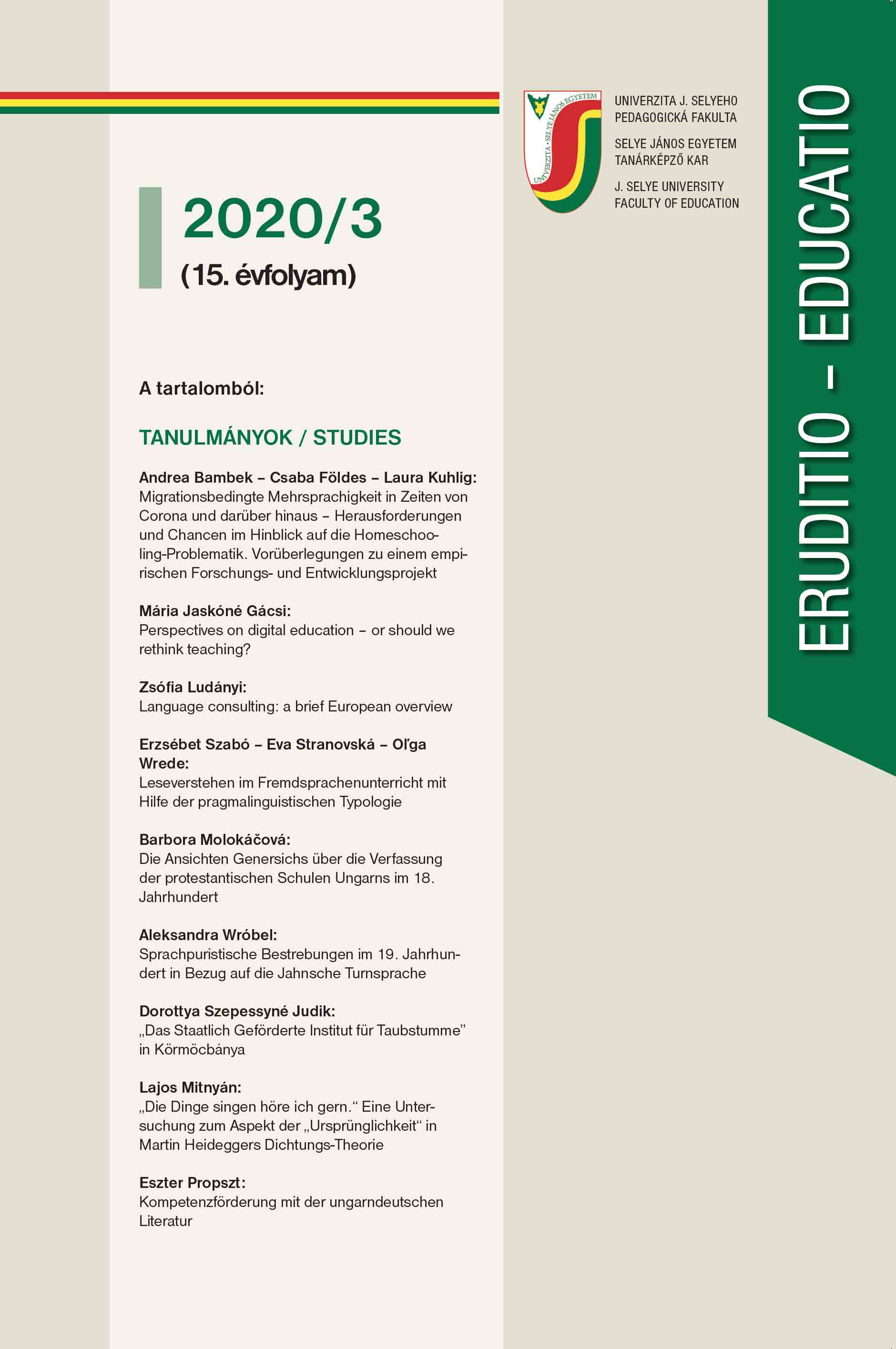„Das Staatlich Geförderte Institut für Taubstumme” in Körmöcbánya
Subsidised education institution for deaf-mute people in Körmöcbánya
Author(s): Dorottya Szepessyné JudikSubject(s): Social Sciences, Education, History of Education
Published by: Pedagogická fakulta Univerzity J. Selyeho
Keywords: education of deaf people; Deaf education institution of Körmöcbánya; school bulletin; social mobility;
Summary/Abstract: The inquiry about the social mobility of deaf people in Hungary is part of the history of disability, but it also can provide useful information for other disciplines, for example for the history of education, history of living, history of culture etc. In Hungary, the first institution for deaf-mute people’s education was established in 1802, in Vác. It aimed at making deaf people „useful members” of society, which was contrary to the popular beliefs of the medieval times. In the reform era, this single institution and its achievements in the field of social mobility were insufficient to change the negative beliefs about deaf-mute people: they were mainly beggars, or were dependants of their families. The turning point was the Austro-Hungarian Compromise in 1867. By the end of 1918, 16 institutions educated deaf-mute students all across Hungary. The opportunities of social mobility for deaf people were based on this school network. In Felvidék, 3 institutions were established: in Pozsony, in Körmöcbánya and in Jolsva. These institutions published school bulletins every year. In my paper, I examine the bulletins of the deaf education institution of Körmöcbánya to demonstrate social mobility of the former students. The bulletins contain the list of the students, their notes, information about their families (parent’s age, occupation, etc.), and statistic data about the institution. Based on the bulletins and the contemporary newspapers I illustrate the role of education in social mobility of deaf people.
Journal: Eruditio - Educatio
- Issue Year: 15/2020
- Issue No: 3
- Page Range: 83-94
- Page Count: 12
- Language: German

